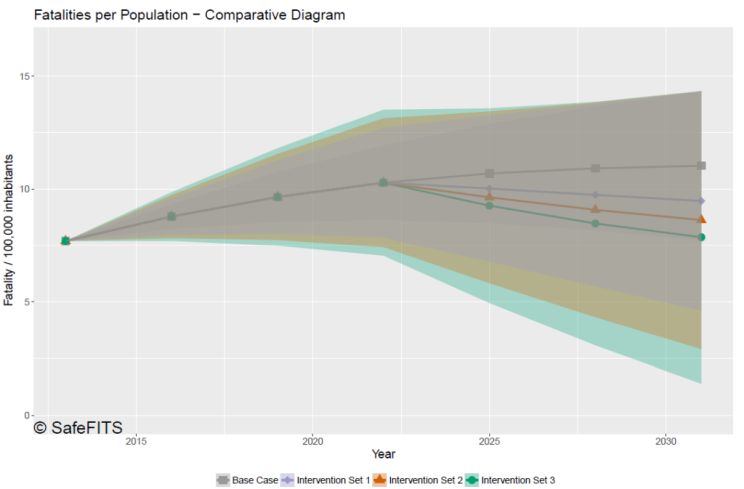
Road accidents constitute a major social problem in modern societies, with road traffic injuries being estimated to be the eighth leading cause of death globally making thus the need for action more and more pronounced. In this context, the SafeFITS, a global road safety model was developed for the United Nations Economic Commission for Europe (UNECE), which is based on global historical road safety data (72 indicators for 130 countries) and may serve as a road safety decision making tool for three types of policy analysis, i.e. intervention, benchmarking and forecasting analysis. For the development of the model, a hierarchical conceptual framework of five layers of the road safety system was designed (namely, economy and management, transport demand and exposure, road safety measures, road safety performance indicators, and road safety outcomes), and a dedicated database was developed with various road safety indicators for each layer. A two-step approach was opted for the purposes of the research, including the calculation of composite variables, their introduction in a regression model and the development of a model on the basis of short-term differences, accumulated to obtain medium- and long-term forecasts. The model developed has overall satisfactory performance and acceptable prediction errors, and preliminary validation provided encouraging results. Its usage might be proved highly useful for testing road safety policies, taking however into account the model limitations, mostly related to data availability and accuracy, and the recommendations for its optimal use.
| ID | pc303 |
| Presentation | |
| Full Text | |
| Tags | accident analysis, information systems, international comparisons, road safety measures, road safety strategy, statistical modelling |







